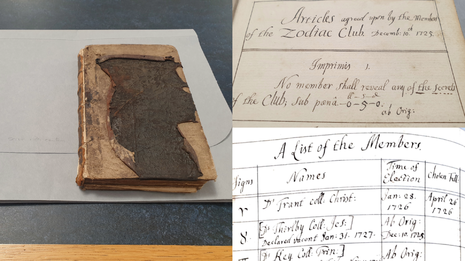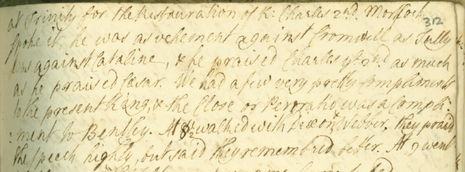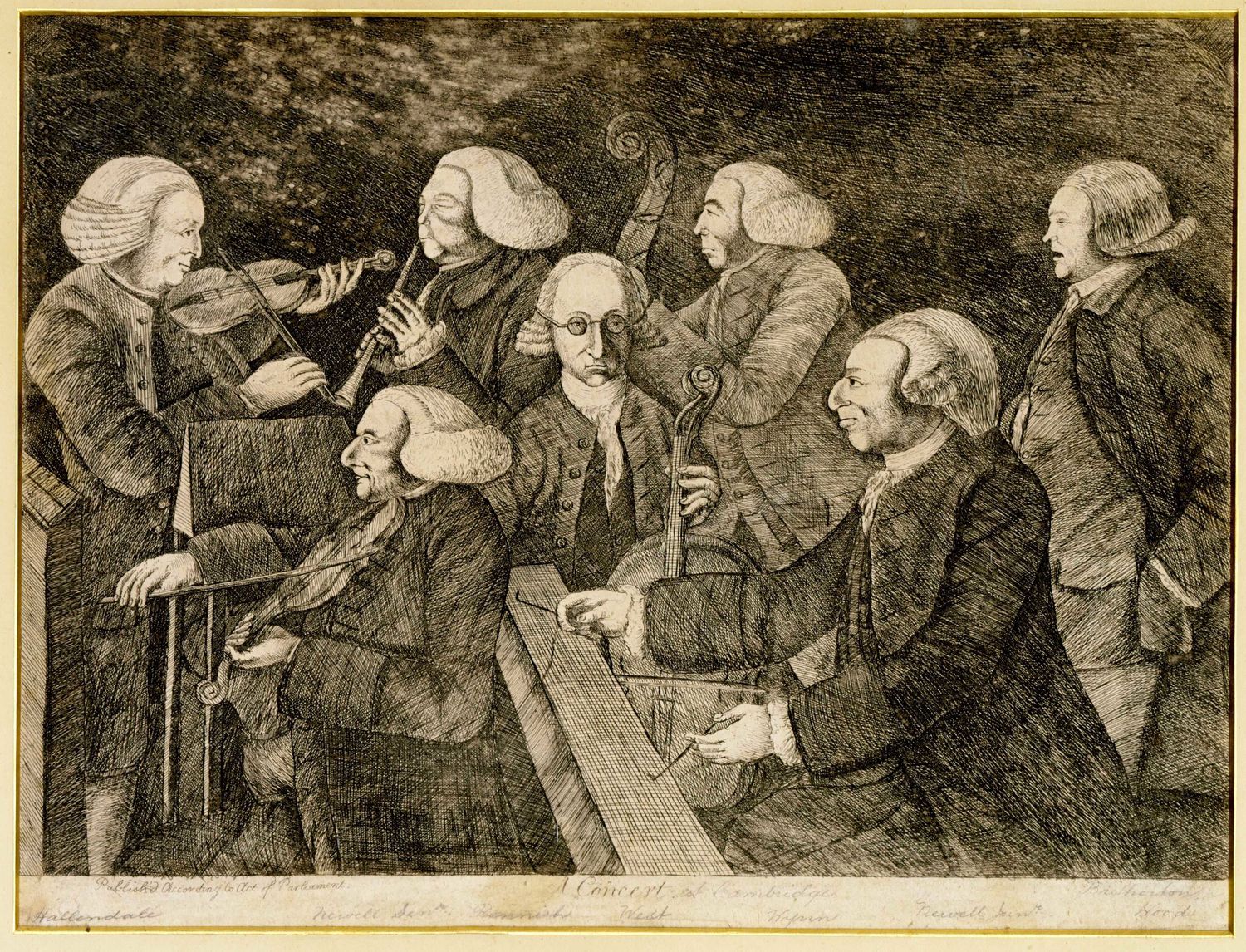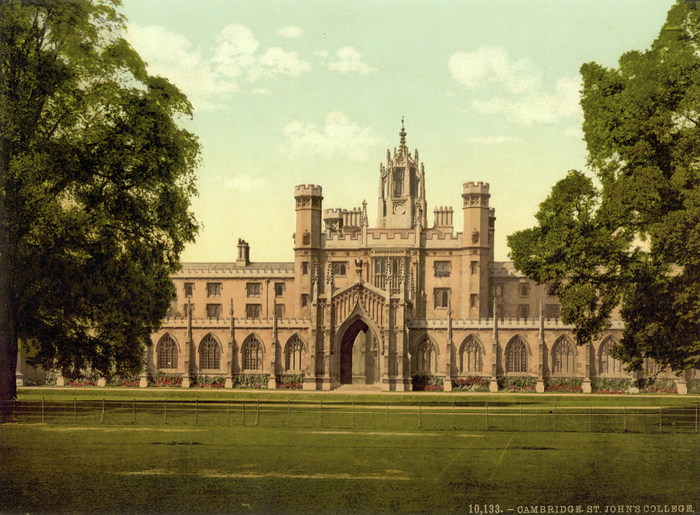It’s easy to think of a medieval student as a faceless, prudish, future clergyman – devoted to nothing but God and the pursuit of knowledge. But for as long as there have been students, they have been searching for ever-more creative ways to kill time. A letter from 1220, addressed from a father to his son studying at Oxford, reads: “I have recently discovered that you live dissolutely and slothfully, preferring license to restraint and play to work, and strumming a guitar while the others are at their studies.” Some four centuries later, in 1660, James Duport – a fellow at Trinity – advises freshers that they ought to avoid football, for it is a “rude, boisterous exercise, and fitter for Clownes than for Schollers.” One can only imagine the look on his face after a quick tour of the Sports Fair.
Since those early days, students have come together in tribes of shared weirdness. The earliest student societies at Cambridge were probably modest affairs given the size of the early modern University, with fewer than 200 matriculations per year by the 18th century. As a result, most have since disappeared without a trace. But from what little records remain, we can piece together what life may have looked like for an undergraduate in the Georgian era.
The Westminster Club, a club for alumni of the eponymous public school in London, was founded sometime before 1750. I say “before” because the little we know of the club arises from the account of its likely demise, published by Thomas Francklin (then regius professor of Greek and club chair). On November 17th, 1750, 46 members, all dressed in purple, met at the Three Tuns Tavern at the corner of the Market Square (a pub where Samuel Pepys may have “drank pretty hard” in 1660, and upon which now sits an Anthropologie), celebrating the commemoration of the school’s foundress, Queen Elizabeth I. At 11pm – moments before the group was about to disperse – the meeting was abruptly interrupted by James Brown, the University’s senior proctor. Brown had a particularly negative reputation amongst undergraduates for carrying a “great stick in his hand to frighten (the boys) home from their play.” In what amounts to the 18th-century equivalent of getting portered, he had waited until precisely 11 o’clock for new regulations against the meetings of clubs to take effect.
“a pub where Samuel Pepys may have “drank pretty hard” in 1660, and upon which now sits an Anthropologie”
The hot words that ensued impelled the vice-chancellor to hold a court session on November 24th, which was met with a “large attendance of undergraduates” who were “overwhelmingly in sympathy with the culprits.” By the conclusion of proceedings on the 27th, the furore had grown to such a degree that the vice chancellor declared that he would expel “on the spot any one that should give the least disturbance.” The ruling was relatively tame: only one man, a fellow at Trinity Hall, had been suspended. The case did, however, easily capture the imagination of the University. As appeals developed over the course of the following year, pamphlets were printed with satirical squibs, and student groups formed to rally supporters of the Westminster Club. It would not be until June 1752 that peace was restored, following arbitration by the archbishop of Canterbury, bishop of London, and lord chief justice – in what may have been slight overkill.
Whilst we have little idea as to the actual goings-on of the Westminster Club, we do have particularly detailed records of another club that met at the Three Tuns several decades earlier: the Zodiac Club. The Manuscripts Reading Room at the University Library holds a treasure trove of some of the club’s most important documents, the most revealing of which is the society’s club-book.

The Zodiac Club was so called due to the number of members being limited to 12, each of whom was assigned one of the 12 signs of the Zodiac. By 1728, the club’s membership had expanded to 18 – with the six new members assigned the six planets as signs. The presidency of the club was to rotate according to each member’s sign, and the club was to meet three times per sign – meeting at quarter past eight at the Three Tuns, and dispersing at 10 o’clock. These meetings continued until at least 1742.
“No member shall reveal any of the secrets of the Club, sub. penalty of 5 shillings”
What might these men have discussed? The ongoing Wars of the Austrian Succession? Shared harsh opinions on Robert Walpole, Britain’s first de facto prime minister? Unfortunately, we have no idea: the very first article of the club’s constitution commits all members to secrecy. However, one of the expressed purposes of the club was to “recommend one that is member… of the Club, against all other candidates” to any “preferment either in or out of the University,” – that is, mutual help in securing positions of power. I have at least a few soon-to-be unemployed friends who may have appreciated such an arrangement.
I must admit that, by this point, I was simultaneously impressed and disappointed. On the one hand, it was perhaps somewhat comforting to hear that the students of the past were no less hedonistic than the students of today. But on the other hand, I couldn’t help but feel slightly let down. I had originally dug into the University archives in hopes of finding some charming historical curiosity – for instance, a long-forgotten Cambridge University Powdered Wig Society. Instead, I was met with something disturbingly familiar: a bunch of plastered Hooray Henrys relying on the old boys’ network for support. Was this really the state of the University at the time it had spawned Wordsworth, Coleridge, and Byron? Where were all the creatives – the 18th century thespians and the musos? What about the Union hacks and Blues sportsmen? In other words, where were all the people who made Cambridge Cambridge?
“I must admit – by this point, I was in equal parts impressed and disappointed”
My questions were soon to be answered in the form of a diary. Spencer Penrice was a fresher at Trinity Hall in 1736. Dying of smallpox just three years later, his greatest legacy was the detailed account he left behind of his first year at Cambridge. I spoke with Kate Foxton, who had previously spent a summer in the Trinity Hall Archives, to better understand what student societies may have been like as Penrice experienced them. Kate has already produced a particularly detailed account of Penrice’s diary, but the highlights are fascinating. In some ways, Penrice was a man of his time. He is known to have frequented some spectacles about town that might not have passed the rigorous health and safety standards of today – such as the hanging of prisoners on Castle Hill, and bull-baiting on Parker’s Piece. In other ways, however, he is relatable. There is some account of intercollegiate sport, as he mentions playing bowls at the “Queens Bowling Green” (of which all that remains today is an avenue of trees on the east bank of the river). He also mentions having attended a debate at Trinity on the “restoration of K: Charles 2nd,” where he notes that one speaker was “as vehement against Cromwell as Tully against Cataline & he praised Charles ye 2nd as much as he praised Caesar.” It sounds like he may have stumbled into a time machine and found himself in CUCA.

Interestingly, Penrice mentions that he is involved with the college Music Club. This is probably not the Trinity Hall Music Society of today – which was founded in the 1920s. However, another college music society claims descent from even before the days of Penrice. And, if its existence has been uninterrupted, may be the oldest existing student society at the University (and perhaps the world).
Christ’s College Music Society claims to have been founded, in some form or the other, by 1710. According to Dr. David R. M. Irving, musicologist and former Christ’s fellow, the earliest mention we have of a “music club” at the college is from the diary of German traveller and book-collector Zacharias Conrad von Uffenbach. Uffenbach’s account is one of a thriving student society – though he remains quite the critic, writing that “When we had spent an hour here, Dr. Ferrari came for us, and took us to the Music club, in Christ’s college. This music meeting is held generally every week. There are no professional musicians there, but simply bachelors, masters and doctors of music, who perform. It is surprising, as they make such ado about music, and even create professors and doctors of music, that still this nation achieves scarcely anything in it… And so too this music, both vocal and instrumental, was very poor.” Uffenbach later describes how his party is ridiculed for asking for “Cheese College” instead of “Caius College”, so I certainly wouldn’t have considered his review authoritative.
The 18th-century undergraduate probably wasn’t so different from us, after all. They were no less athletic, no less musical, and certainly no less alcoholic. But whatever change there has been, it has largely been change for the better. For while we have lost the hangings on Castle Hill, we have gained Tiddlywinks.


